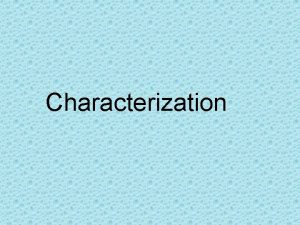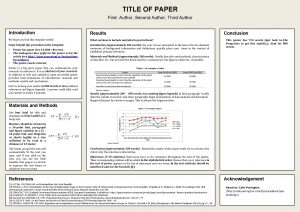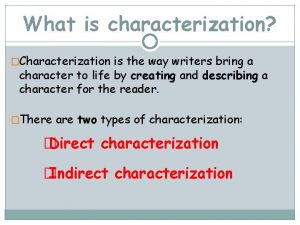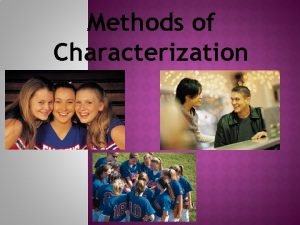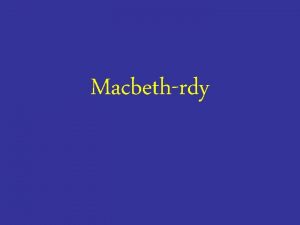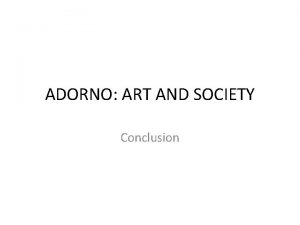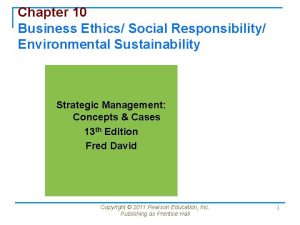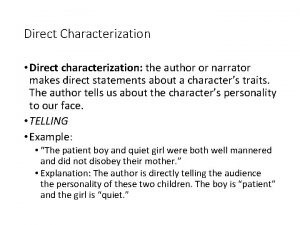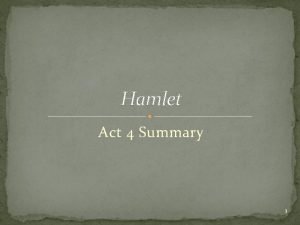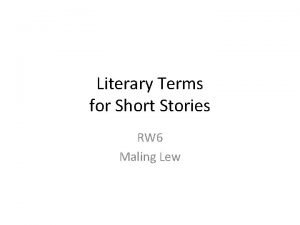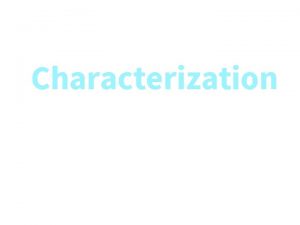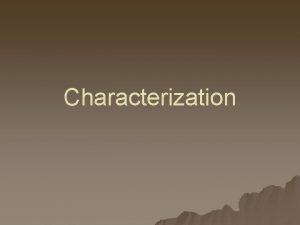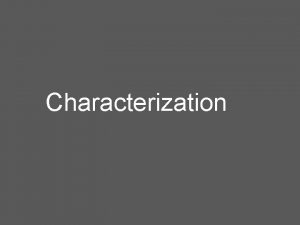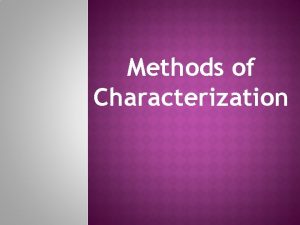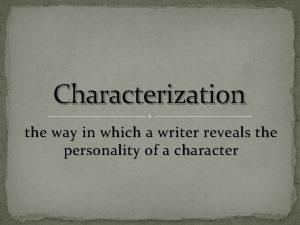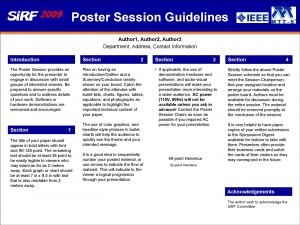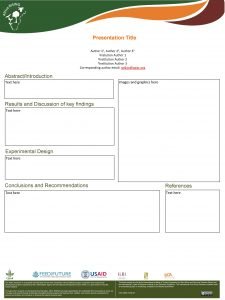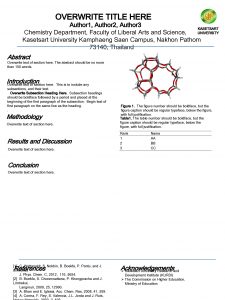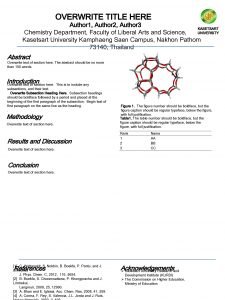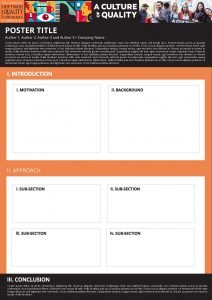Characterization Characterization the way an author reveals the



















- Slides: 19

Characterization

Characterization – the way an author reveals the special qualities and personalities of a character in a story, making the character believable.

Analyzing Character Traits We try to figure out what a character in a book is like by paying attention to the clues the author gives us. This is called “making inferences. ” Example: What can you infer? “No, Honey, I don’t want you to spend a lot of money on my birthday present. Just having you for a husband is the only gift I need. In fact, I’ll just drive my old rusty bucket of bolts down to the mall and buy myself a little present. And if the poor old car doesn't break down, I’ll be back soon. ”

Types There are two types of characterization: ü Direct ü Indirect.

Direct Characterization Direct characterization is when the author TELLS the audience what the personality of the character is. Example: “The patient boy and quiet girl were both at the game. ”

Indirect Characterization Indirect characterization is when the author SHOWS things that reveal the personality of the character. There are FIVE different methods of indirect characterization: speech, thoughts, effect on other characters, actions, and looks.

Indirect Characterization – writer shows you what character is like by revealing: • S- Speech • T- Thoughts • E- Effect on Others • A- Actions • L- Looks

The Difference The difference between direct characterization and indirect characterization is TELLING v. SHOWING! Indirect characterizations are like clues about the characters. There is no mystery with direct characterization because the author gives us the information we need to know!

Speech– We often get to know characters because of what they say to each other. Anita threw her arms around Tony and gave him a big hug. “Thank you so much for being there for me, ” she said. “I don’t think I could have faced my parents without you. ” thoughtful compassionate appreciative

Thoughts– When an author lets us get inside the mind of a character, we can often learn a great deal about him or her. Butch looked around the neighborhood. “This would be a safe place to play catch with Bobby, ” he thought. “Why doesn’t Bobby throw the ball? ” He must be in a bad mood or something. ” loyal concerned playful

Effect On Others– sometimes other characters will tell us something useful about the character we’re reading about. “You wouldn’t believe what Lisa did yesterday, ” Sara said to her sister. “When we went into the bridal shop, she pushed all the women aside and demanded that the sales lady help us immediately. It was really something!” Demanding pushy assertive

Actions – Much of what we learn about characters is revealed to us through what they do. Denise picked up the slimy bull frog. She could hardly stand to hold it even for a moment. She held it out at arm’s length from her body and quickly carried it to her brother. squeamish sensitive nervous

Looks Can infer a lot about characters from the clothes they wear, their facial features, their body language, and their mannerisms. Tex was the head rancher on the farm. When he rounds up the horses, he can be easily spotted with his beige hat and vest. Tex’s smile is a mile wild, even with his bushy mustache. jovial proud dedicated

Typesofofcharacters Types * Round * Flat * Dynamic * Static

Static • a character who does not change in personality, nature, or attitude. • he/she is the same sort of person from the beginning of the story until the very end = static

Dynamic (developing) • a character who undergoes at least one permanent, important change in personality, nature, or attitude. • if a character has become noticeably more mature, wiser, more understanding, or more patient – or has changed in any other significant way = dynamic

Round • a well developed, multi-sided, and complex character. • we feel that we know the character so well that he or she has become a real person = round

Flat • is not fully developed • we know only one side (one description) of the character = flat

Wrap-Up Do you know / explain the following: • Inference • Characterization – Direct – Indirect • • Static Dynamic Round Flat
 Characterization is the way and author
Characterization is the way and author First author second author third author
First author second author third author Direct characterization definition
Direct characterization definition What is indirect characterization
What is indirect characterization Characterization is the way and author
Characterization is the way and author Characterization direct and indirect
Characterization direct and indirect Who reveals that his supporters will be made earls
Who reveals that his supporters will be made earls Art reveals society
Art reveals society A sustainability report reveals a firm's
A sustainability report reveals a firm's Mark twain reveals stage fright
Mark twain reveals stage fright Whats a controlling idea
Whats a controlling idea Guttering definition ww1
Guttering definition ww1 Which narration reveals a character with a shy personality
Which narration reveals a character with a shy personality What is centeral idea
What is centeral idea Central idea of the story
Central idea of the story Hamlet summary act 4
Hamlet summary act 4 Elements of satire
Elements of satire Characterization is how an author describes
Characterization is how an author describes An author's viewpoint is the way in which he or she
An author's viewpoint is the way in which he or she Personification meaning and examples
Personification meaning and examples
